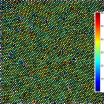(Press-News.org) Research calls into question people's ability to form their own judgements about their preferred election candidate after finding voters could be heavily swayed by 'the worm'. 'The worm' is a continuous response tracking measure that is increasingly being used in live election debates around the world.
The University of Bristol and Royal Holloway, University of London study "Social Influence in Televised Election Debates: A Potential Distortion of Democracy" is published in the journal PLoS One.
Televised election debates were introduced in the United States in 1960, and now play a prominent role in the election campaigns of many countries. The United Kingdom held its first televised election debates between the leaders of the main parliamentary parties in 2010. To help viewers evaluate voter response to the issues discussed in the debates, broadcasters including ITV and the BBC made use of a sampling methodology often referred to as 'the worm'; a similar methodology has been used by CNN in the United States and by broadcasters in Australia and New Zealand.
Unlike the sample sizes of hundreds or thousands of voters that are standard in political polls, the worm is based on a very small sample of undecided voters (sometimes as few as 12). These voters watch the debate live and record their satisfaction with what the leaders are saying using a handset. Their averaged responses result in a time series of data — the "worm" — that is superimposed over the video of the debate.
The researchers carried out their study by manipulating the worm and superimposing it on a live broadcast of the third UK election debate, which was viewed by the study subjects. The experimenters successfully convinced the majority of the viewers taking part in the study that they were watching an authentic audience response to the live debate. Two groups of 75 viewers took part; in one group, the worm favoured the incumbent Prime Minister, in the other group it favoured the leader of the Liberal Democrats Nick Clegg.
Professor Jeff Bowers from the University of Bristol's School of Experimental Psychology, said: "Apart from the concerns about unintential bias, there is real possibility that the worm could be used to systematically bias the outcome of the election.
"Given the small sample of undecided voters that generate the worm, just one or two persons could influence the worm by voting for one candidate no matter what. The system is cute, but open to abuse."
Professor Colin Davis, from the Department of Psychology at Royal Holloway explained: "We were amazed by the size of the effect that our worms had on viewers' opinions of who won the debate, and even on their choice of preferred Prime Minister. If our results were to generalise to the population at large, a biased worm in a debate shortly before polling day could determine the result of a close election.
He added: "In theory, an election debate should be an opportunity for the public to listen to the candidates and form independent opinions that are unfiltered by spin and commentary. The introduction of the worm compromises that possibility.
"The squiggly worm is certainly interesting to watch — sometimes more interesting than the candidates — but there's a real danger that we can get sucked in by the worm and allow it to sway, or even determine, our opinion. Results like ours force us to reconsider to what extent 'our' opinions really are our own."
### END
Using live worms as bait: Voters swayed by interactive 'worm' graph during election debate
2011-03-31
ELSE PRESS RELEASES FROM THIS DATE:
Warm water causes extra-cold winters in northeastern North America and northeastern Asia
2011-03-31
PASADENA, Calif.—If you're sitting on a bench in New York City's Central Park in winter, you're probably freezing. After all, the average temperature in January is 32 degrees Fahrenheit. But if you were just across the pond in Porto, Portugal, which shares New York's latitude, you'd be much warmer—the average temperature is a balmy 48 degrees Fahrenheit.
Throughout northern Europe, average winter temperatures are at least 10 degrees Fahrenheit warmer than similar latitudes on the northeastern coast of the United States and the eastern coast of Canada. The same phenomenon ...
Special Issues in Military Divorces
2011-03-31
During military operations such as Enduring Freedom and Desert Storm, the United States Armed Services have fought to protect the interests of the nation. While service members offer their lives as a sacrifice to their country, there are other sacrifices that might not be so evident and that relate to a soldier's family.
In 2009, more than 27,000 divorces occurred in which at least one spouse was an active member of the Army, Air Force, Navy or Marine Corps. While this number represents a levelling in military divorce rates, the issue of military divorce presents unique ...
Blood simple circuitry for cyborgs
2011-03-31
Could electronic components made from human blood be the key to creating cyborg interfaces? Circuitry that links human tissues and nerve cells directly to an electronic device, such as a robotic limb or artificial eye might one day be possible thanks to the development of biological components.
Writing in the International Journal of Medical Engineering and Informatics, a team in India describes how a "memristor" can be made using human blood. Memristors were a theoretical electronic component first suggested in 1971 by Berkeley electrical engineer Leon Chua and finally ...
Mucus: Fighting the war against pollutants
2011-03-31
Are our bodies vulnerable to some pollutants whose lack of solubility in water, or "hydrophobicity," has always been thought to protect us from them? New Tel Aviv University research has discovered that this is indeed the case.
Studies by Dr. Michael Gozin of Tel Aviv University's School of Chemistry at the Raymond and Beverly Sackler Faculty of Exact Sciences and Dr. Dan Peer of TAU's Laboratory of Nanomedicine in the Department of Cell Research and Immunology have revealed that mucus — the thick substance lining those internal bodily organs that come into contact with ...
Nevada Reconsiders the Use of Red-Light Cameras
2011-03-31
In 1999, the Nevada legislature passed a law banning the use of cameras to catch traffic violations at intersections. However, North Las Vegas is now pushing to change that law to allow the use of cameras to go after those running red lights. The current legislative bill to make the change has garnered the support of the Nevada Department of Transportation and the Nevada Sheriff's and Chief's Association. However, it is not without opposition.
The Case For and Against Cameras
Red light cameras work by videoing or photographing cars that do not stop for red lights. ...
A new method to localize the epileptic focus in severe epilepsy
2011-03-31
The first two stereo-EEG explorations in Finland were carried out by neurosurgeons of the Epilepsy surgery team in Helsinki University Central Hospital this spring. The method reinforces other examination methods already in use and opens an excellent opportunity in the exploration of the electric activity of both the surface and the deep brain structures during epileptic seizures. The examination also enables exact localization of the functionally important areas of the brain and improves safety of epilepsy surgery at a later stage.
The stereo-EEG examination was developed ...
Case study reports singing lowers patient's blood pressure prior to surgery
2011-03-31
Doctors report that singing reduced the blood pressure of a 76-year-old woman who had experienced severe preoperative hypertension prior to total knee replacement surgery for osteoarthritis (OA). While the patient was unresponsive to aggressive pharmacologic interventions, the woman's blood pressure dropped dramatically when she sang several religious songs. This case-report appears in the April issue of Arthritis Care & Research, a journal published by Wiley-Blackwell on behalf of the American College of Rheumatology (ACR).
Traditional therapy for preoperative hypertension, ...
Next Round in Fight over Entergy Ruling Expected This Year
2011-03-31
When the Texas Supreme Court upheld the ruling in the Entergy case on rehearing in 2009, it was a huge win for property owners to the detriment of injured workers. The failure of the state legislature to pass a law overturning the Entergy decision that same year seemed to signal defeat for those hoping to protect the rights of injured contract workers to fair compensation for their injuries.
However, the fight over third-party liability for workplace injuries in Texas appears to be far from over. With the Workers' Compensation Division up for their sunset review this ...
KIT presents innovations at the 2011 Hannover Messe
2011-03-31
This release is available in German.
Innovations relating to mobility, energy, bionics, and nano- and microtechnologies will be presented by KIT at the 2011 Hannover Messe from April 4 – 8. At its stand (Hall 2, stand C18), KIT will present a hybrid Porsche racing car, developments in battery research, materials and processes for printable electronics, the KIC InnoEnergy for a European energy supply system, and the Energy Solution Center (EnSoC) competence network. Moreover, KIT contributes to other stands and special exhibitions.
KIT main stand, hall 2, (Research ...
'Spincasting' holds promise for creation of nanoparticle thin films
2011-03-31
Researchers from North Carolina State University have investigated the viability of a technique called "spincasting" for creating thin films of nanoparticles on an underlying substrate – an important step in the creation of materials with a variety of uses, from optics to electronics.
Spincasting, which utilizes centrifugal force to distribute a liquid onto a solid substrate, already has a variety of uses. For example, it is used in the electronics industry to deposit organic thin films on silicon wafers to create transistors.
For this study, the researchers first dispersed ...


